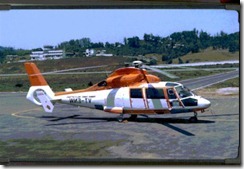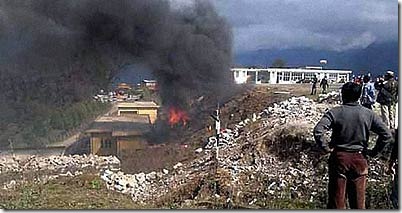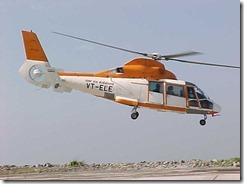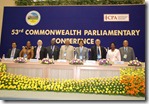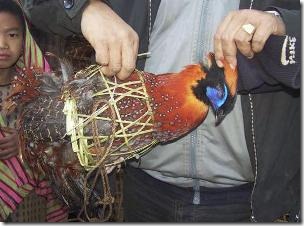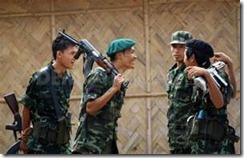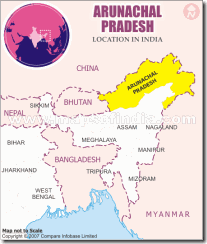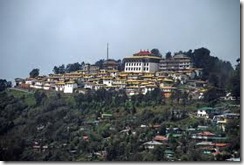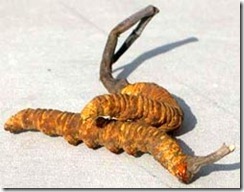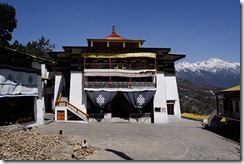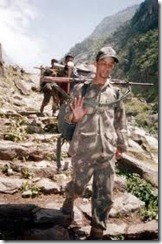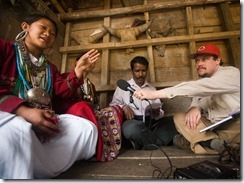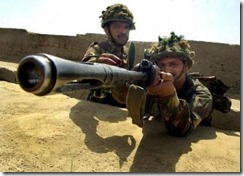Search for Arunachal CM continues
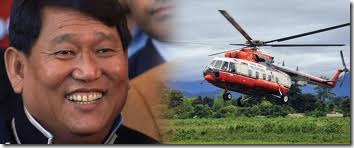
Itanagar, May 2 : The Pawan Hans helicopter carrying Arunachal Pradesh Chief Minister Dorjee Khandu and four others that went missing on Saturday still remains untraced as adverse weather continues to affect the aerial and ground level search operation even as authorities zeroed in on one probable location, Nagarjiji, a remote place close to Sela Pass in Tawang district, to track down the chopper and its occupants, including Khandu.
“For the third day today, inclement weather affected the aerial search and rescue operation by the helicopters to locate the chopper in which Chief Minister Dorjee Khandu and four others were traveling on Saturday. There is no concrete information yet about the missing helicopter but all efforts are on to get some clue.
“However, the ground level search teams comprising Army, SSB, ITBP and State Police forces, besides thousands of local people have started proceeding towards the place called Nagarjiji, a far-flung hill station adjacent to Sela Pass,” divulged Union Minister of State for Parliamentary Affairs V Narayanasamy while briefing the media here this evening.
He said, “Nagarjiji has been indentified to be the probable place with the inputs provided by Indian Space Research Organization (ISRO) as per the imagery data collected by them on Sunday.
“The ground level search and rescue teams reached Chabrela, from where they have to trek for another five to six hours on feet to reach Nagarjiji which means a concrete information on this could only be known tomorrow by around 2 pm,” Narayanasamy said.
He said due to bad weather accompanied by poor visibility, the helicopters could not be launched despite all-out efforts put in to track down the missing chopper and the Chief Minister.
“We are not losing our hearts, hope will find the Chief Minister in safe and sound health,” said the Prime Minister’s emissary, Narayanasamy on a confident note.
“The imagery data collected from ISRO and Air Force are being analyzed and shared with all the agencies as well as the forces on ground for concentrating search in definite areas. The search is also on in other areas depending on the inputs and information available from various sources. All the information/intelligence are being shared with all concerned on real time basis through crisis management group, operating round the clock to expedite the search and rescue operation,” said Arunachal government spokesman and Power Minister Jarbom Gamlin.
He said, “Today also in early morning, two choppers of Indian Air Force had flown from Tawang to Bhutan territories. However, they returned to the base after recce without any success and further sorties could not be made because of inclement weather.”
Earlier in the morning, a 20-member Crisis Management Team headed by Lok Sabha MP Takam Sanjoy left for Bomdila after receiving the information that three possible locations have been identified where the chopper with Chief Minister Dorjee Khandu might have landed or crashed.
Accordingly, the search operation for the missing chopper has been narrowed down to the three locations along the Indo-Bhutan border, basing on the satellite images and other local reports. The places are: Nagarjiji close to Sela Pass, Eaglenest Wildlife Sanctuary adjacent to Dirang in West Kameng district and Mobi, a small hamlet in Trashiyangtse district of Bhutan.
“I am leading the team to Bomdila and we would set up a camp there and personally oversee the search and rescue operation in these three areas to locate the missing helicopter,” said the MP before leaving Itanagar.
Meanwhile, four Indian Air Force helicopters were pressed into service early Monday for conducting aerial surveys - two Mi-17 helicopters took off from Tawang and two Chetak helicopters flew from a base in Tezpur in Assam. Bad weather, however, led the aerial survey to be abandoned for the day after about two hours of flying.




